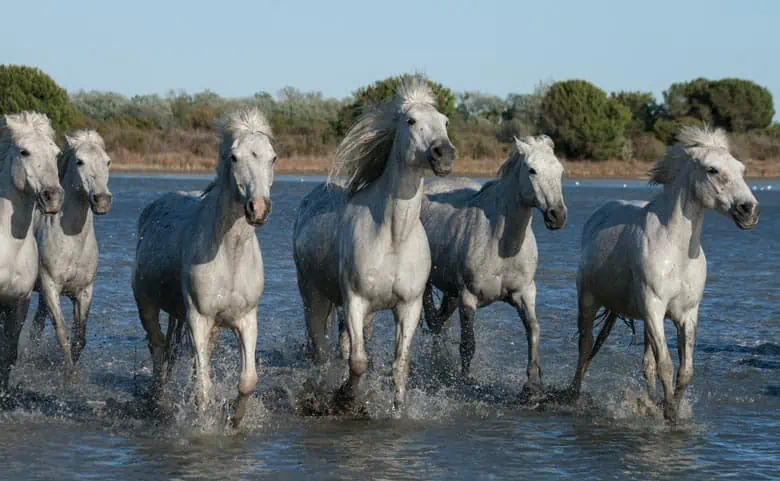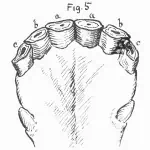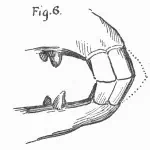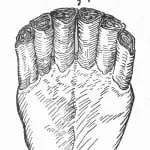Horses Age
Gauging a horses age can come in handy, particularly when you are purchasing a new horse.
At three years (Fig 1) the horse will have two permanent teeth – aa. The remaining four (b b and c c) are foal teeth. The black marks of the teeth in the centre (a a) will be very plain, but in others, signs of wear appear.
At four years (Fig 2) the next two permanent teeth have appeared (b b), the foal teeth remaining (c c). The edges of the central nippers (a a) wear down over time, resulting in a notable decrease in sharp edges.
At five years (Fig 3) the central marks in (a a) show a good deal of wear. Leaving only a black speck. The next two (b b)wear to a lesser degree. The last two permanent to come (c c) show the mark very plainly.
At six years (Fig 4) the centre teeth (a a) will show a very small black spot, and (b b) will show a good deal of wear, with (c c) still showing plainly.
At seven years (Fig 5) the marks of (a a) are obliterated. The marks in (b b) will be very small, but in (c c) they will still show plainly the horse’s age. It requires a good deal of practice to tell a horse’s age after seven years. The teeth of the upper jaw must be studied.
At about eight years the upper teeth will be in about the same condition as the lower at six. Until the horses age is between six and seven the teeth grow nearly perpendicular to each other as in Fig 6. From then on they gradually extend in a straight line from the jaws. Until in very old age, they would appear where the dotted line is marked. Teeth of a very old horse. As a horse gets old the teeth become rounder in shape and get very discoloured (Fig 7).








